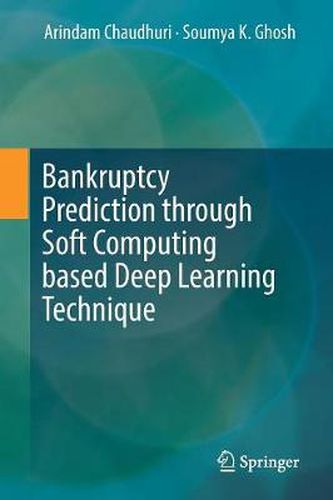Readings Newsletter
Become a Readings Member to make your shopping experience even easier.
Sign in or sign up for free!
You’re not far away from qualifying for FREE standard shipping within Australia
You’ve qualified for FREE standard shipping within Australia
The cart is loading…






This title is printed to order. This book may have been self-published. If so, we cannot guarantee the quality of the content. In the main most books will have gone through the editing process however some may not. We therefore suggest that you be aware of this before ordering this book. If in doubt check either the author or publisher’s details as we are unable to accept any returns unless they are faulty. Please contact us if you have any questions.
This book proposes complex hierarchical deep architectures (HDA) for predicting bankruptcy, a topical issue for business and corporate institutions that in the past has been tackled using statistical, market-based and machine-intelligence prediction models. The HDA are formed through fuzzy rough tensor deep staking networks (FRTDSN) with structured, hierarchical rough Bayesian (HRB) models. FRTDSN is formalized through TDSN and fuzzy rough sets, and HRB is formed by incorporating probabilistic rough sets in structured hierarchical Bayesian model. Then FRTDSN is integrated with HRB to form the compound FRTDSN-HRB model. HRB enhances the prediction accuracy of FRTDSN-HRB model. The experimental datasets are adopted from Korean construction companies and American and European non-financial companies, and the research presented focuses on the impact of choice of cut-off points, sampling procedures and business cycle on the accuracy of bankruptcy prediction models.
The book also highlights the fact that misclassification can result in erroneous predictions leading to prohibitive costs to investors and the economy, and shows that choice of cut-off point and sampling procedures affect rankings of various models. It also suggests that empirical cut-off points estimated from training samples result in the lowest misclassification costs for all the models. The book confirms that FRTDSN-HRB achieves superior performance compared to other statistical and soft-computing models. The experimental results are given in terms of several important statistical parameters revolving different business cycles and sub-cycles for the datasets considered and are of immense benefit to researchers working in this area.
$9.00 standard shipping within Australia
FREE standard shipping within Australia for orders over $100.00
Express & International shipping calculated at checkout
This title is printed to order. This book may have been self-published. If so, we cannot guarantee the quality of the content. In the main most books will have gone through the editing process however some may not. We therefore suggest that you be aware of this before ordering this book. If in doubt check either the author or publisher’s details as we are unable to accept any returns unless they are faulty. Please contact us if you have any questions.
This book proposes complex hierarchical deep architectures (HDA) for predicting bankruptcy, a topical issue for business and corporate institutions that in the past has been tackled using statistical, market-based and machine-intelligence prediction models. The HDA are formed through fuzzy rough tensor deep staking networks (FRTDSN) with structured, hierarchical rough Bayesian (HRB) models. FRTDSN is formalized through TDSN and fuzzy rough sets, and HRB is formed by incorporating probabilistic rough sets in structured hierarchical Bayesian model. Then FRTDSN is integrated with HRB to form the compound FRTDSN-HRB model. HRB enhances the prediction accuracy of FRTDSN-HRB model. The experimental datasets are adopted from Korean construction companies and American and European non-financial companies, and the research presented focuses on the impact of choice of cut-off points, sampling procedures and business cycle on the accuracy of bankruptcy prediction models.
The book also highlights the fact that misclassification can result in erroneous predictions leading to prohibitive costs to investors and the economy, and shows that choice of cut-off point and sampling procedures affect rankings of various models. It also suggests that empirical cut-off points estimated from training samples result in the lowest misclassification costs for all the models. The book confirms that FRTDSN-HRB achieves superior performance compared to other statistical and soft-computing models. The experimental results are given in terms of several important statistical parameters revolving different business cycles and sub-cycles for the datasets considered and are of immense benefit to researchers working in this area.